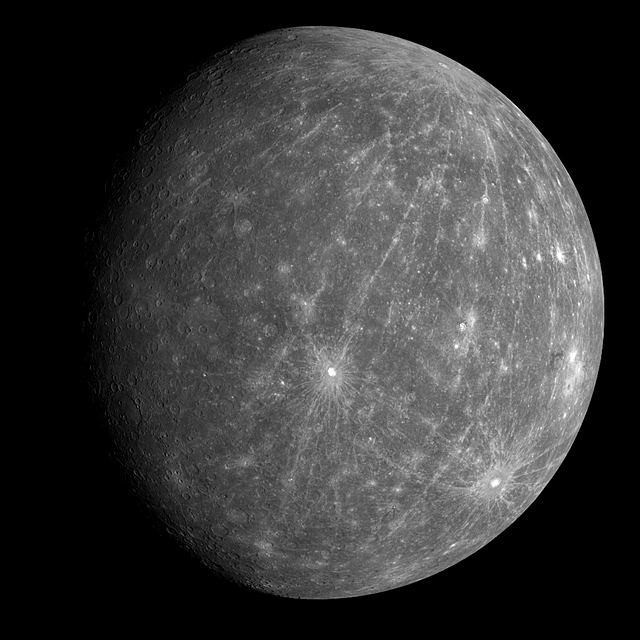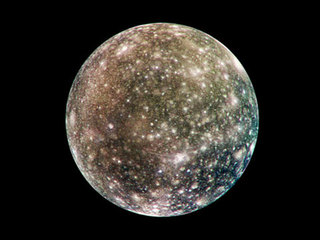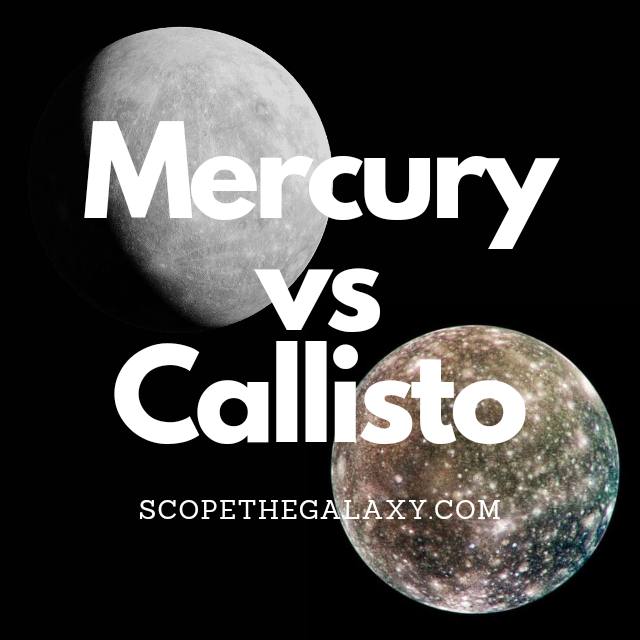*This post may contain affiliate links. This means we may make a commission if you purchase an item using one of our links*
The main differences between Mercury and Callisto would be that Mercury is slightly bigger with a diameter of 4,879km compared to Callisto’s 4,820.6km, Callisto is the 3rd largest moon that also happens to orbit Jupiter whilst Mercury is the smallest official planet that orbits the Sun and a day on Callisto is 17 days whilst it’s 55.85 days on Mercury.
There are numerous other differences between the two so continue reading for a more detailed breakdown of each entity along with similarities and differences between the two.
What Is The Planet Mercury?
Table of Contents

Mercury is the planet closest to our Sun and would fall under the terrestrial planet moniker. Out of the 8 main line planets Mercury is also the smallest, coming in at 4,879km.
This planet is known for having its fair share of craters, which is mostly down to its thinner non protective atmosphere that is unable to stop interstellar debris from striking its surface.
Despite its close proximity to the Sun, Mercury is not the hottest planet in our solar system but, it does come in second, just behind Venus. It’s surface temperature is around 430 degrees on the upper end with the average temperature around 167 degrees Celsius whereas its core is far hotter at around 1,600 – 3,000 degrees Celsius.
Due to it close proximity to our local star, Mercury is unable to sustain a moon around its orbit and even has a very unique rotation around the Sun where it has 3:2 orbital resonance with the Sun.
As for how long it takes for the planet to rotate around our yellow dwarf star, its the shortest time period of 88 days for obvious reasons, whilst a single day on the planet takes 58.65 Earth days to complete. Its axial tilt is only 2 degrees to the right, making it amongst the straightest planets in the solar system too.
What Is The Moon Callisto?

Callisto is one of the large moons orbiting Jupiter, the outermost of the Galilean moons, first discovered on 7th January 1610. The surface of this icy world is frozen, but scientists believe an underground ocean could reside beneath the ice.
Even if there’s water on Callisto, it won’t necessarily hold life because the surface is so old. Scientists will need to conduct more research into the moon before determining whether this is a likely possibility.
The ESA’s JUICE (Jupiter Icy Moon Explorer) mission is focused on the three ice moons of Jupiter. It is expected to arrive in 2030 and will focus on learning more about the environment of each, as well as their potential for hosting life.
Scientists estimate that Callisto is around 4.5 billion years old (the same age as Jupiter), and its average distance from the Sun is approximately 778 million km. It has a diameter of 4820.6km, which makes it similar in size to the planet Mercury, and the average temperature is a frigid minus 139.2 degrees Celsius.
Callisto takes seven days to orbit its planet at an average distance of 1,880,000km, and it is tidally locked, meaning the same side of it always faces Jupiter. But this moon experiences less tidal influence than the other Galilean moons because it lies in the orbit of Jupiter’s primary radiation belt.
The name of this moon is derived from the stories of Greek myth. Callisto was the nymph who had an affair with Zeus, the King of the Gods. Upon hearing this news, Zeus’ wife Hera turned Callisto into a star and placed her in the Ursa Major constellation. Interestingly, every moon of Jupiter is named after a Greek figure who Zeus seduced.
Callisto may be the third biggest moon and similar in size to the planet Mercury, but it only has a mass of 107,593,737,963.819 billion kg. That may sound like a lot, but it’s only ⅓ the mass of the similarly sized Mercury.
You may wonder why scientists classify Callisto as a “moon” rather than a planet if it’s almost the same size as Mercury. The reason is simple; planets must orbit the sun, but Callisto orbits one of the planets.
The composition of this frigid world is around 60% rock and iron and 40% ice. The moon has roughly equal amounts of rock and ice, plus the potential for water below the surface. There are also traces of carbon dioxide, organic compounds, and silicates.
This moon is one of the oldest landscapes in the Milky way and the most heavily cratered body in our system. However, scientists believe this could now be a “dead” moon as there are no longer any signs of volcanism or plate tectonics on its surface.
Similarities Between Mercury And Callisto
Callisto and Mercury do have their fair share of similarities, which in this case would include the following:
- Both have a hotter central core.
- Both are a spherical in shape.
- Both are terrestrial planets.
- Both have a very thin atmosphere and a rocky surface.
- Both have no other natural satellites orbiting them.
- Neither have tectonic plates.
Differences Between Mercury And Callisto
In regards to the differences between the two, they include the following:
- Mercury is slightly bigger with a diameter of 4,879km compared to Callisto’s diameter of 4,820.6km.
- Mercury has a magnetosphere (albeit a weak one) whilst Callisto does not.
- Callisto orbits Jupiter in an elliptical pattern whilst Mercury orbits the Sun in a nearly circular pattern.
- Callisto is tidally locked to Jupiter whilst Mercury is in a 3:2 orbital resonance with the Sun.
- Mercury has an extremely thin atmosphere that is very thin and non-protective consisting of oxygen, sodium and hydrogen whilst Callisto has a very thin carbon dioxide based exosphere.
- Callisto is one of the most heavily cratered entities in our solar system as it has 142 named craters with a lot more smaller one scattered throughout the moon whilst Mercury has around 414 named craters and many other smaller throughout.
- A day on Callisto takes 17 days whilst Mercury completes a day in 55.85 days.
- Mercury orbits the Sun in 88 days whilst Callisto orbits the Sun in 12 years and around Jupiter in 17 days
- Callisto’s density is 1.83 g/cm³ whilst Mercury’s density is 5.43 g/cm³.
- In regards to axial tilt, Mercury’s is 2 degrees whilst Callisto’s is practically 0 degrees.
- Mercury has an average temperature of 167 degrees Celsius whilst Callisto’s temperature is -139.2 degrees Celsius.
- As for mass, Callisto’s is 1.07 x 10^23 kg whilst Mercury has a mass of 3.285 × 10^23 kg.
- Mercury has a gravitational strength of 3.7 m/s² whilst Callisto’s is 1.236 m/s².
Summary
Mercury and Callisto are very similar in variety of ways whether it be in regards to size, their extremely thin atmospheres, and their general terrestrial compositions but there are also various differences too.
These differences include their density, mass, gravitational strength, length of day, temperature and the fact one is a planet that only orbits the Sun whilst the other orbits both Jupiter and the Sun.

